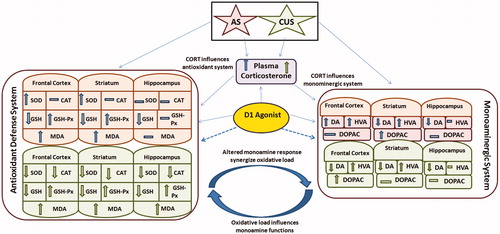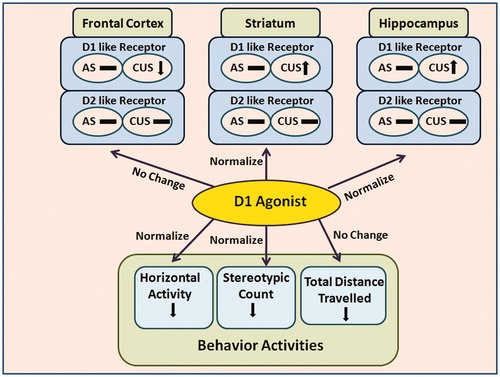Figures & data
Table 1. Distribution of dopamine receptors in the brain and their functions and their associated behavior alterations.
Table 2. Role of stress and altered dopaminergic system in neurological disorders.
Table 3. Interplay of stress and altered dopaminergic system in behavioral disorders.
![]()

![]()

